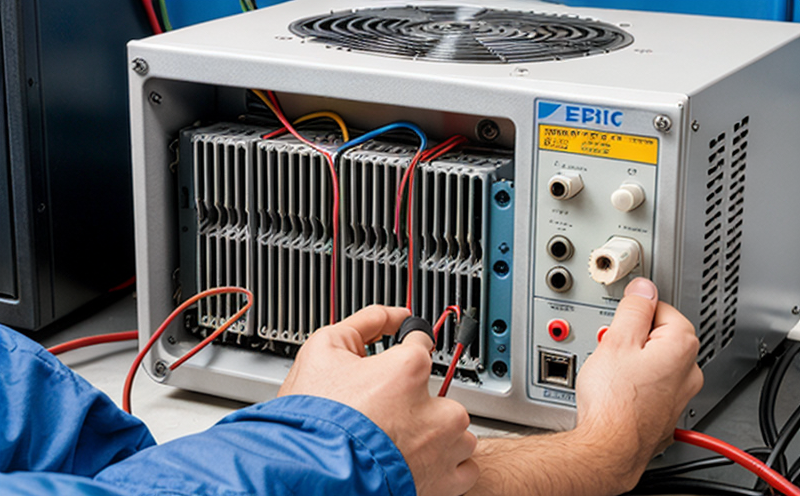IEC 60092-715 Arc Flash Protection Testing of Marine Power Systems
The IEC 60092-715 standard provides a framework for ensuring the safe operation and design of electrical installations in marine power systems, with particular emphasis on arc flash protection. This service is tailored to address critical aspects such as system safety, compliance requirements, and risk management in maritime environments. By adhering to this standard, stakeholders can mitigate the hazards associated with arc flashes, which are sudden releases of energy due to arcing faults.
Marine power systems present unique challenges due to their dynamic operating conditions and harsh environmental factors such as saltwater exposure, vibration, and moisture. These conditions can significantly impact the performance and reliability of electrical equipment, making it essential to conduct thorough testing that accounts for these variables. The IEC 60092-715 standard offers a robust set of guidelines to ensure that arc flash protection systems in marine settings are designed, installed, and maintained effectively.
The first step in this process involves an initial assessment of the marine power system's electrical characteristics. This includes evaluating factors such as voltage levels, current ratings, and the presence of protective devices like fuses and circuit breakers. Based on these assessments, we identify potential areas where arc flashes could occur and prioritize testing efforts accordingly.
Once identified, specific components are subjected to rigorous testing protocols outlined in IEC 60092-715. These tests aim to evaluate the performance of protective equipment under simulated fault conditions. Key parameters include short-circuit current levels, duration, and temperature rise. By simulating real-world scenarios as closely as possible, we can determine whether the protective devices will function correctly when faced with an arc flash event.
During testing, it is also crucial to consider the physical characteristics of the equipment being tested. Factors such as size, shape, and material composition play a significant role in determining how effectively they will protect against arc flashes. For instance, larger components may require more extensive protection measures than smaller ones. Additionally, certain materials may offer better insulation properties or heat dissipation capabilities, influencing design decisions.
Another critical aspect of IEC 60092-715 compliance is ensuring that all relevant documentation is maintained accurately throughout the testing process and beyond. This includes detailed records of test procedures, results, and any modifications made based on those findings. Such documentation serves not only as proof of adherence to industry standards but also as valuable resources for future maintenance activities or troubleshooting efforts.
Finally, regular monitoring and auditing are vital components of maintaining IEC 60092-715 compliance over time. This ongoing evaluation helps identify any areas where improvements can be made and ensures that all necessary precautions continue to be taken against arc flash risks.
Why It Matters
The importance of IEC 60092-715 cannot be overstated, especially within the marine industry where safety is paramount. Arc flashes can result in severe injuries or fatalities if not properly managed, making compliance with this standard a non-negotiable requirement for any organization operating in maritime environments.
- Reduces risk of injury and loss of life
- Avoids costly downtime due to equipment failures
- Promotes safer working practices among personnel
- Ensures regulatory compliance, avoiding potential fines or penalties
By implementing the recommendations provided by IEC 60092-715, organizations can create a culture of safety that extends beyond just meeting minimum legal requirements. This proactive approach not only protects employees but also enhances overall operational efficiency and reputation.
Industry Applications
| Application Area | Description |
|---|---|
| Marine Vessels | Incorporation of arc flash protection measures in shipboard electrical systems to safeguard crew and passengers. |
| Oceanographic Research Ships | Ensuring safety during scientific operations involving sensitive instrumentation. |
| Fishing Vessels | Maintaining reliable power supply for critical onboard equipment despite challenging sea conditions. |
| Tugboats and Pilots | Providing enhanced safety features to support essential harbor operations. |
The application of IEC 60092-715 extends far beyond traditional shipbuilding into various specialized areas. From offshore oil platforms to deep-sea drilling rigs, the principles outlined in this standard ensure that electrical systems are designed with arc flash protection as a priority.
- Offshore Platforms
- Drilling Rigs
- Platform Supply Vessels
- Oil Tankers
In each of these applications, the goal remains consistent: to protect human life and critical operations while adhering to global safety standards.
International Acceptance and Recognition
- ISO: The International Organization for Standardization recognizes IEC 60092-715 as a key document in promoting international trade by ensuring interoperability between different countries' standards.
- ASTM: American Society for Testing and Materials has referenced IEC 60092-715 in its own publications, reinforcing its importance across various industries.
- EN: European Norms have incorporated elements of this standard into their own guidelines, reflecting the widespread acceptance among EU member states.
- IEC: As part of the International Electrotechnical Commission family, IEC 60092-715 is widely accepted internationally and forms a foundation for many other standards related to electrical safety.
The global recognition of IEC 60092-715 underscores its significance in establishing consistent practices across different regions. This interoperability ensures that regardless of location, those involved in marine power systems can rely on the same benchmarks for safety and performance.





